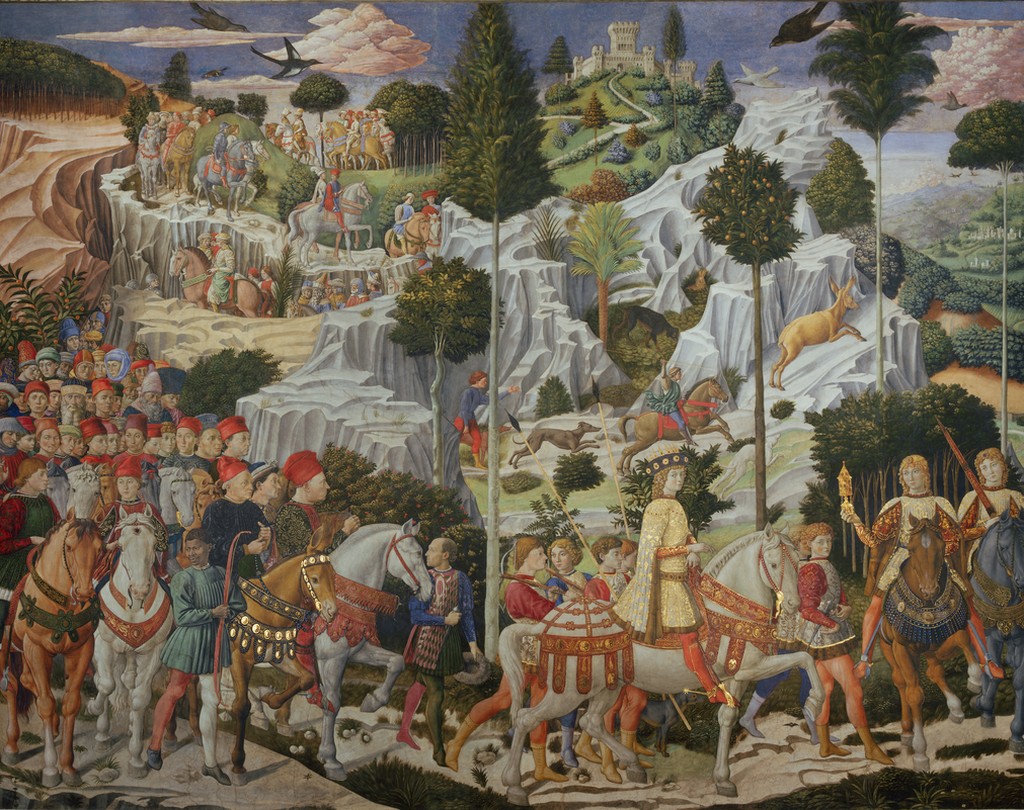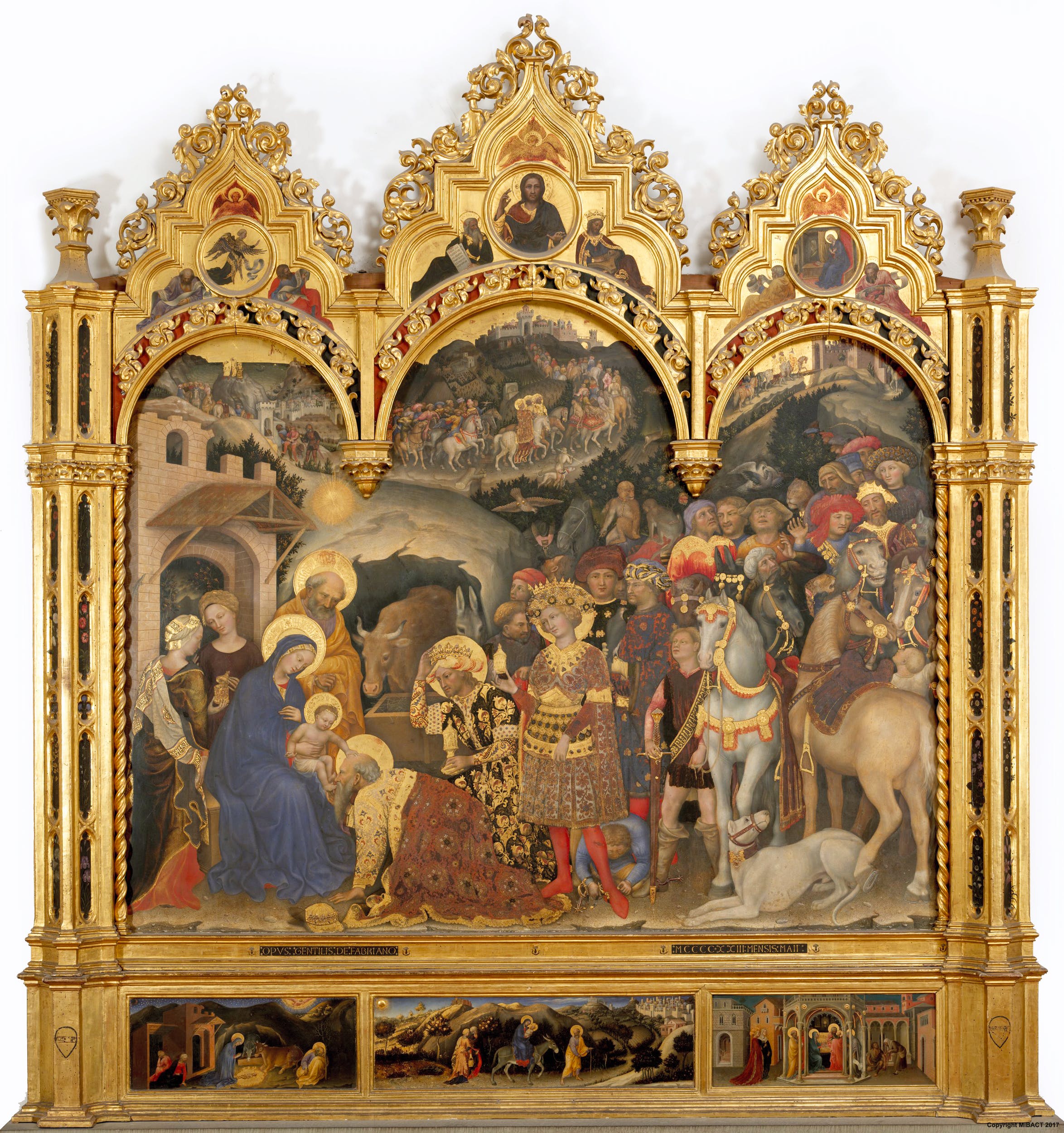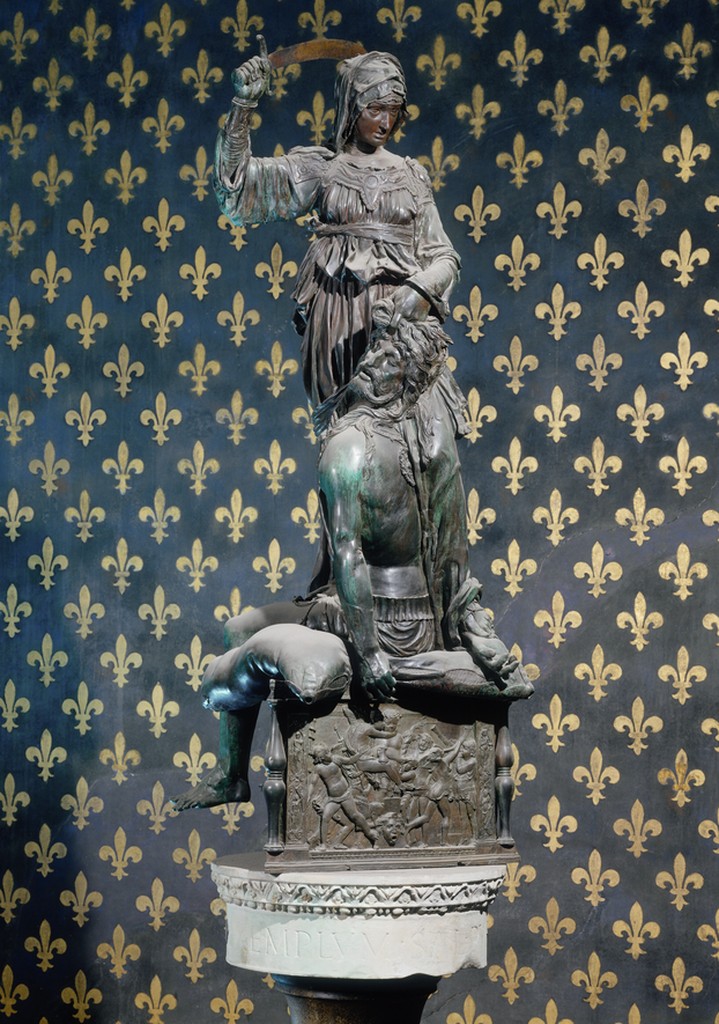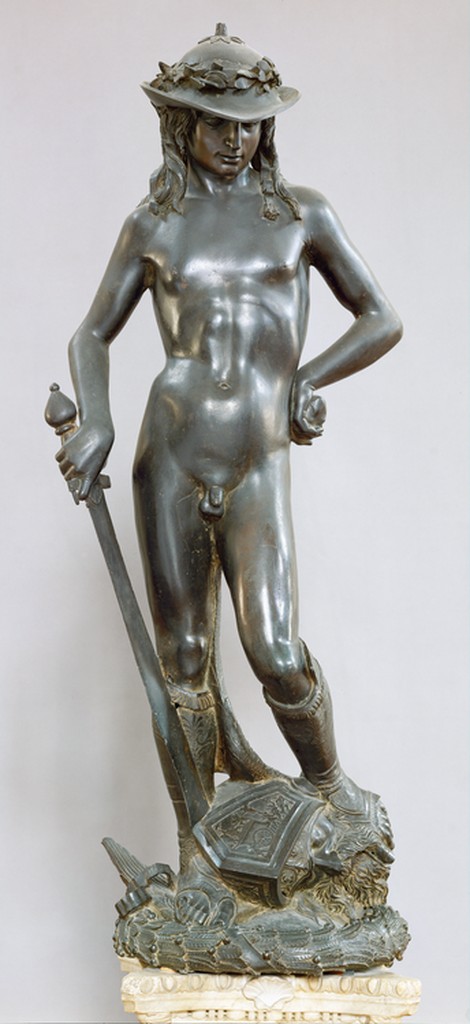BIBLICAL FIGURES
The Medici commissioned works of art featuring biblical figures to associate their family with highly-valued religious virtues. In doing so, they created an image of themselves as trustworthy leaders of the Republic.

The Journey of the Magi, Benozzo Gozzoli 1459 - Medici Palace Chapel
Commissioned by Piero de' Medici, The Journey of the Magi was the central fresco in the Medici Palace chapel. Cosimo, Lorenzo, and Piero Medici lead the procession as the Magi. Because religion was associated with power, the Medici put themselves in place of the Magi to convey their importance. The Magi represented kingship, also reflecting the Medici's power.
"The fresco was not just a glorification of the Medici family as a whole but a tribute to Cosimo's role in creating their prestige and power."
~ Malcom Oxley

Adoration of the Magi, Gentile da Fabriano 1423 - Strozzi Chapel
Not only was the above fresco made to display power, it also represented the enormous wealth of the Medici in comparison to their rivals. To the right is the altarpiece of the Strozzi family chapel which depicts the adoration of the Magi. To display their superior wealth, the Medici later commissioned a larger and more extravagant fresco of the same scene.

Judith and Holofernes, Donatello 1456- Palazzo Vecchio

David, Donatello 1440 - Palazzo Vecchio
Cosimo de' Medici commissioned the statues Judith and Holofernes and David and placed them in the gardens of the Palazzo Medici (The Medici Palace). The biblical figure of David was the emblem of the city of Florence because he represented the republican values of justice over tyranny. By displaying the figure of David, Cosimo communicated to the rival Albizzi family that "virtue can triumph over strength" (Richard Stemp).
The statue of Judith and Holofernes was commissioned after Cosimo returned from exile. The inscription: "Kingdoms fall through luxury, cities rise through virtues; behold the neck of pride severed by humility," echoes the defeat of the Albizzi regime.
"...the Medici employed a strategy of commissioning works of art that veiled their political thrust in a context of acceptable religious and moral themes."
~ Sarah McHam